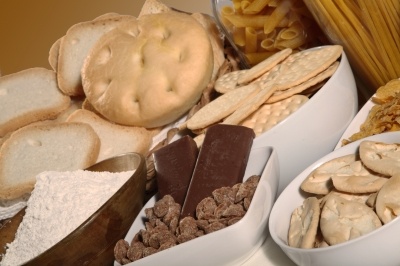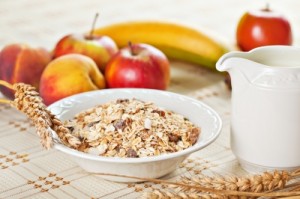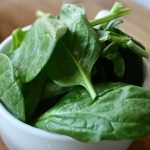
Overview Of Iron Fortification
Iron is one of the essential minerals in nutrition with a variety of roles in the body. It is critical in general growth and performance (Kroner, 2011). Lack of iron is still one of the major nutritional deficiencies in all regions of the world and can lead to iron deficiency anaemia (IDA). Iron fortification is a common practice in maintaining a nation’s health (Martinez-Navarrete et al., 2002).
Iron is needed for red blood cell function because haemoglobin has this metal at the heart of its molecule, helping to transport oxygen in the blood.
Sources
We can obtain iron naturally from meat, liver, nuts, beans, various fruits including dried forms, fortified breakfast cereals, wholegrains (brown rice or unpolished rice), soybean flour, water cress and the dark green leafy vegetables like kale. Advice to pregnant women is not to eat liver because it also contains high levels of vitamin A which can damage an unborn baby when taken in large amounts according to the UK’s NHS.
Requirements
A man needs 8.7 mg per day whilst a woman needs almost twice as much, about 14.8mg per day. A well balanced diet should provide all the iron that is needed.
Adding iron to the diet is probably the best way of providing extra iron to those population groups that suffer iron deficiency (Johnson-Wimbley and Graham, 2011). The World Health Authority (WHO) considers iron deficiency extremely seriously. Nutritional anemia for example still affects 40% of the world’s population, half the children in the world including 10% of children in the developed world. Iron deficiency leads to poor cognition, tiredness and adverse pregnancy (IOM, 2002).
One of the other reasons for countering iron deficiency anemia (IDA) is to overcome issues of thyroid metabolism (Zimmermann et al. 2000a, 2000b; Hess et al. 2002a, 2002b) .
Food fortification with a number of vitamins and minerals is practised where nutritional deficiency is due to a monotonous, poor quality diet. Co-fortification of foods with iron, iodine and vitamin A may be advantageous due to beneficial interactions of these micronutrients in metabolism.
The USA began its iron fortification program back in 1943 and it has had a major impact on reducing anaemia – the condition associated with iron deficiency. Initially the addition levels were 29 to 36 ppm but rose in 1982 to 44 ppm and the program now accounts for nearly 25% of the total iron intake. Chile also has a program of iron-fortified milk but there are few other governmental programs operating. One of the issues is sustainability and finding adequate sources of bioavailable iron (Lynch, 2005).
In economic terms, iron fortification is less costly than supplementation (Baltussen et al., 2004).

Breakfast and infant cereal products are the most important vehicles (Ranum and Loewe, 1978), whereby elemental iron is added because of its relatively low sensory profile but has a low adsorption rate. Alternatives to elemental iron include the iron salts because bioavailability and functional stability are critical factors in iron fortification. Consideration has thus been given to finding soluble forms of added iron salts that will not detrimentally promote oxidation of other sensitive ingredients. The iron phosphate compounds were used extensively earlier but their use declined due to their very low availability and relatively low solubility. Other forms of iron such as ferrous succinate and fumarate, and electrolytic forms of iron are better absorbed and are added mostly to flour and cereals (Hurrell et al.,1989; 2002). The freely soluble ferrous sulphate is the best to be absorbed but is also the most reactive with other nutrients, producing off flavours and colour but is commonly added to infant formulas, bread and pasta.
Home fortification using sprinkles represents an alternative approach (Liyanage & Zlotkin, 2002; Tondeur et al., 2004).
Iron fortification of drinks has never been possible because soluble iron is highly reactive and also acts as a catalyst in the destruction of vitamin C for example. It also promotes free radical reactions which damage the quality of the product (Zimmermann & Windhab, 2010).
Product developers seek to optimise iron addition and obtain the best levels of absorption by the body without compromising product quality and flavour, especially over shelf-life. Iron fortification must be considered carefully to ensure the highest proportion of those vulnerable to iron deficiency receive it without compromising those that do not require it.
Effects Of Taking Too Much Iron
If the doses of iron taken are too high, more than 20 mg generally then the likely symptoms are:-
⊗ nausea
⊗ vomiting
⊗ stomach pain
⊗ constipation
The NHS in the UK has a very useful web-page covering the benefits of iron. The author has experience in choosing iron based nutrients for food fortification and is happy to discuss application.
If you are keen to know more about the benefits of iron fortification from other authoritative sources then I would suggest looking at the web-site Health Ambition which looks at eight ways to increase your iron levels alongside other aspects discussed in greater detail.
This article contains links to our affiliate marketing partner. Please read our affiliate disclosure.
References
Hurrell, R.F., Bothwell, T., Cook, J. D., Dary, O., Davidsson, L., Fairweather-Tait, S., Hallberg, L., Lynch, S., Rosado, J., Walter, T. & Whittaker, P. (2002). The usefulness of elemental iron for cereal flour fortification: a SUSTAIN Task Force report. Sharing United States Technology to Aid in the Improvement of Nutrition. Nutr Rev. 60, pp. 391-406.
Hurrell R.F., Furniss DE, Burri J, Whittaker P, Lynch SR, Cook JD (1989) Iron fortification of infant cereals: a proposal for the use of ferrous fumarate or ferrous succinate. Am. J. Clin. Nutr. 49(6) pp.1274–1282 .
IOM (2002) Institute of Medicine. Iron. In: Dietary reference intakes for vitamin A, vitamin K, arsenic, boron, chromium, copper, iodine, iron, manganese, molybdenum, nickel, silicon, vanadium, and zinc. Washington, D.C.: National Academy Press, pp. 290-393
Johnson-Wimbley, T.D., Graham, D.Y. (2011) Diagnosis and management of iron deficiency anemia in the 21st century. Therapeutic Adv. Gastroenterology 4(3) pp. 177-184
. (2011) Vitamins and minerals. United States: Greenwood.
Liyanage C, Zlotkin S (2002) Bioavailability of iron from micro-encapsulated iron sprinkle supplement. Food Nutr. Bull. 23 pp. 133–137
Lynch, S.R. (2005) The impact of iron fortification on nutritional anaemia. Best Pract Res Clin Haematol. 18, pp. 333–346.
, , , , . (2002) Iron deficiency and iron fortified foods – a review. Food Res. Int. 35 pp. 225–31. https://doi.org/10.1016/S0963-9969(01)00189-2
Ranum, P.M. and Loewe, R.J. (1978) Iron enrichment of cereals. Bakers Digest 52(3): pp.14.
Tondeur, M.C., Schauer, C.S., Christofides, A., et al., (2004) Determination of iron absorption from intrinsically labelled microencapsulation ferrous fumarate (sprinkles) in infants with different iron and haematological status by using a dual-stable-isotope method. Am.J.Clin.Nutr. 80 pp. 1436-44
Zimmermann, M.B., Adou P, Torresani T, Zeder C, Hurrell RF (2000a) Persistence of goiter despite oral iodine supplementation in goitrous children with iron deficiency anemia in Cote d’Ivoire. Am. J. Clin. Nutr. 71(1) pp. 88–93
Zimmermann, M.B., Adou P, Torresani T, Zeder C, Hurrell RF (2000b) Iron supplementation in goitrous, iron-deficient children improves their response to oral iodized oil. Eur. J. Endocrinol. 142(3) pp. 217–223
, . (2010) Encapsulation of iron and other micronutrients for food fortification. In: Zuidam NJ, Nedovic VA, editors. Encapsulation technologies for active food ingredients and food processing. London: Springer. pp. 187–209 (Article).

Leave a Reply